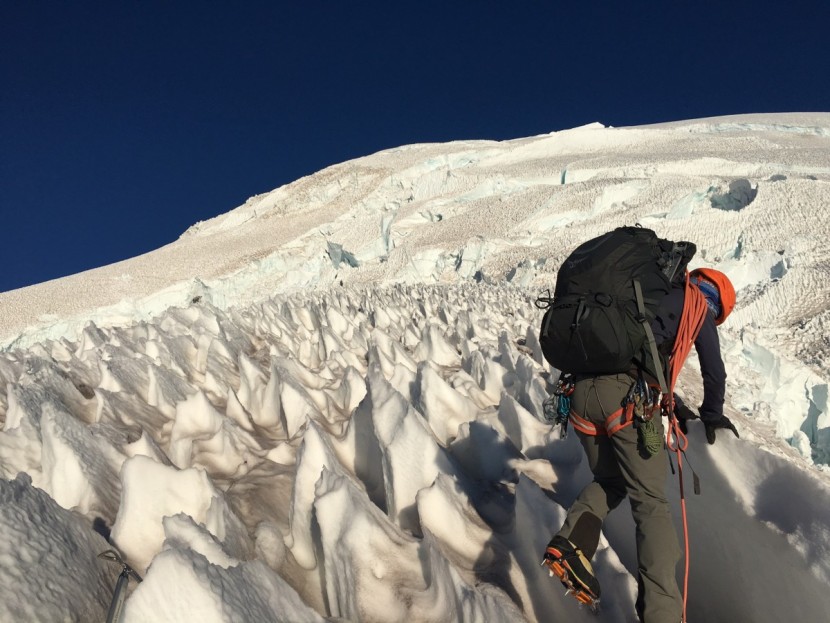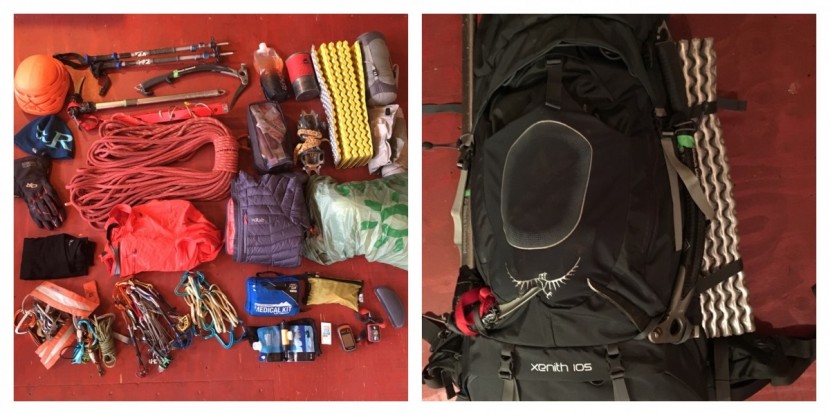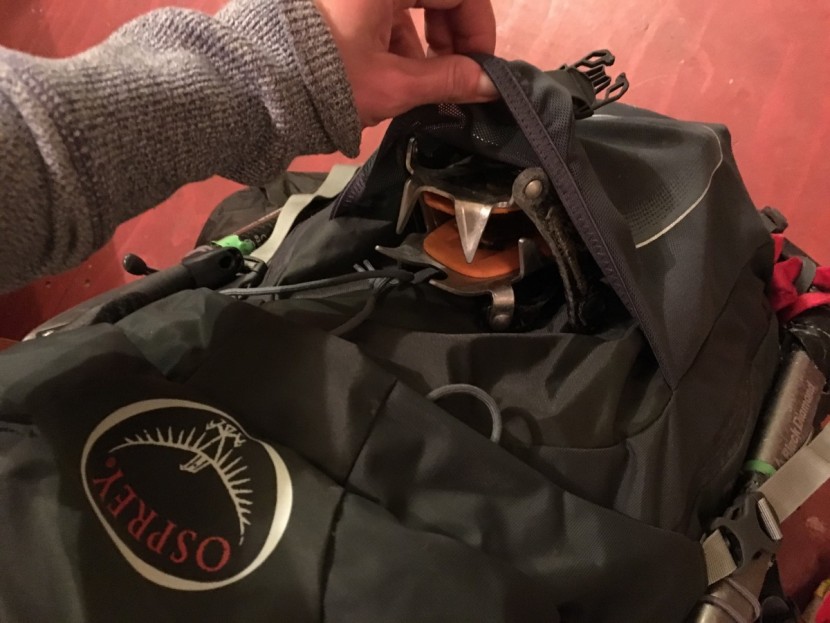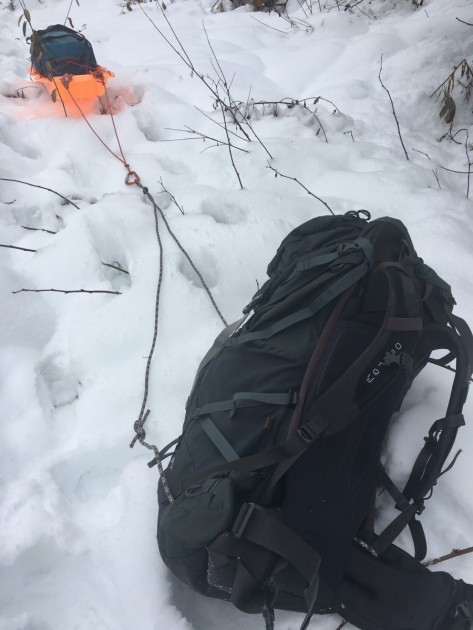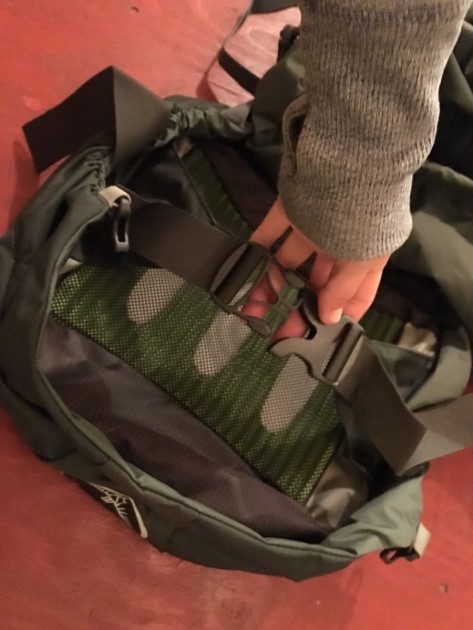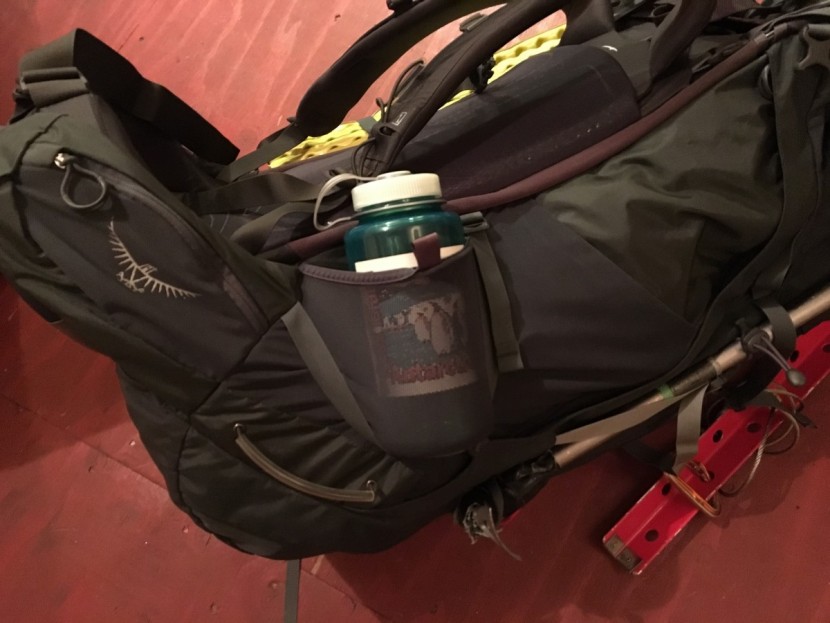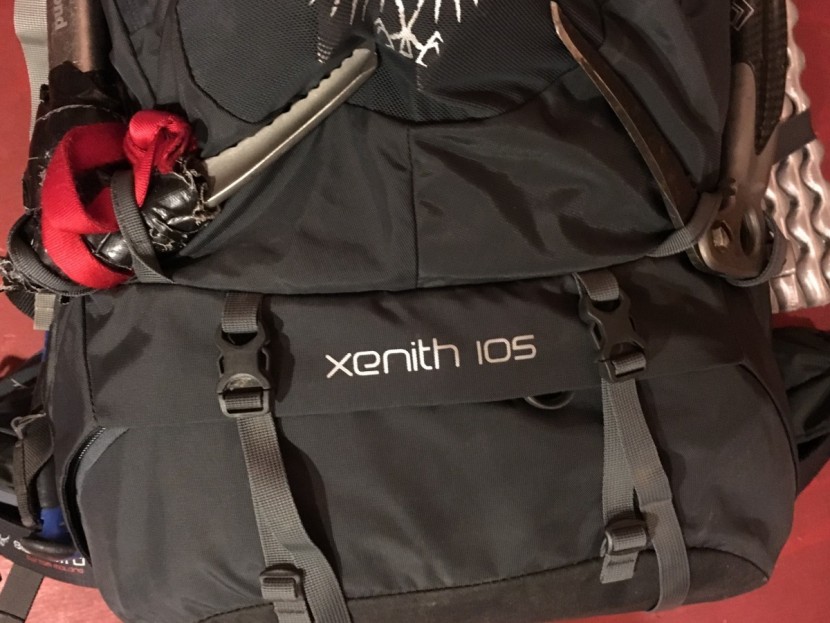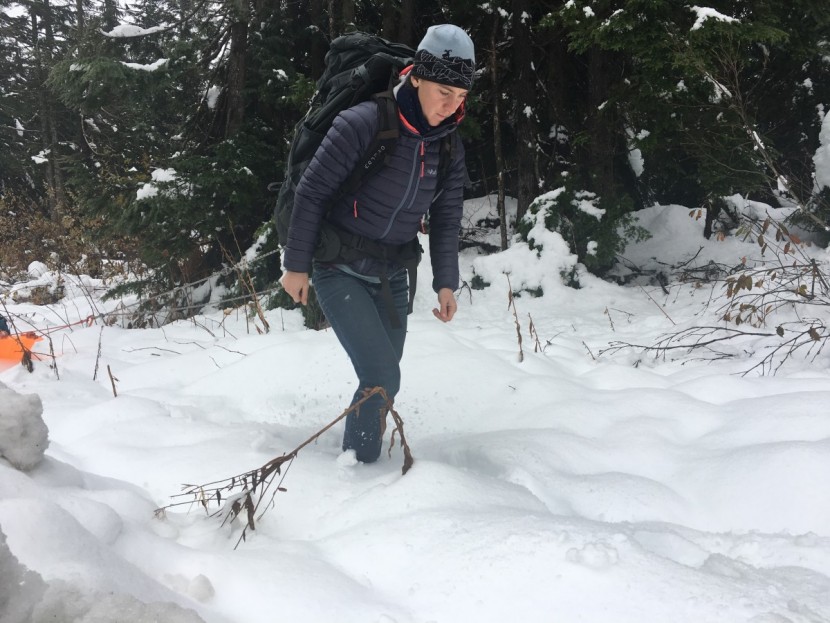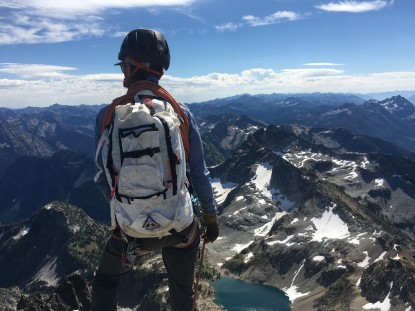Osprey Xenith 105 Review
Our Verdict
Our Analysis and Test Results
Hands-On Review of the Osprey Xenith 105
The Osprey Xenith 105 is a huge backpack, designed as a gear hauler and expedition pack. It is versatile enough for different expedition types, but not the best model for all-around mountaineering use.
Weight-To-Volume Ratio
The Xenith is a behemoth pack, most similar in this review to the Gregory Denali 100. It's an expedition pack designed to haul a lot of gear. For as similar as the Xenith and Denali are, it was stunning that Osprey is nearly a pound lighter, weighing in on our scales at 5.5 pounds, versus 6.3 pounds for the Osprey. That alone is impressive.
If weight to volume ratio is your top concern for your next expedition, shaving a pound off with this pack might be the way to go.
Comfort
The Xenith took a hit in the comfort metric because of the design of the frame above the shoulder straps. We frequently had trouble adjusting the Xenith to get the top of the backpack out of our head-space. The frame would restrict our ability to look around, especially while wearing a helmet. We looked at the Denali and Xenith side by side and noticed that Gregory put a gentle bend in the frame, angling it away from your head as it rises above the shoulder straps. The Denali also has a semi-circular hole in the center where your head will be most of the time.
On the Xenith, the frame continues straight up from the shoulder straps and even protrudes forward slightly. They attempt to mitigate this with a scoop in the middle for your head; this works okay if you look straight ahead, but that's not how we climb. This was by far our biggest complaint with this pack, and singlehandedly would make us think twice about taking it on an expedition. If you check out this model, spend some quality time making sure this doesn't bother you. Some of our testers appreciate the other features on this pack enough that this isn't a problem, but it's an important one to consider. A competitor that increases neck tension and affects your head motions can be fatiguing and frustrating to work with for a three-week expedition.
Durability
Osprey nudges ahead of the Denali in the durability department for its use of slightly higher denier nylon. In theory, this should make the fabric more durable, but in our field tests, we did not notice any remarkable differences. Instead, we look for stress points or overuse areas that might fail, and both of these packs are up to par. The Xenith gets a remarkable 9 out of 10 in this category, just one point ahead of the Denali. Our conclusion? They are both excellent and durable choices for a long and difficult expedition—or several years of expeditions! Both have been on our expeditions to Alaska and South America for many years now and have stood the test of time. The current models hold up those high standards.
Versatility
The Xenith is a much more basic expedition pack than the Denali 100. The Denali, as the name suggests, is designed very well for a climb like the West Buttress of Denali (formerly Mt. McKinley). The Xenith, however, has a few features, like a sleeping bag access zipper and simpler ice axe attachments, that help reduce the pack's overall weight and keep those things out of the way if you don't need them.
Features
Osprey has long been known in the outdoor industry for making packs with a lot of features. For some, this can be too much and feel over-engineered. For expedition packs, features can be quite useful. Since you will be hauling a lot of food and gear to a high camp, and won't likely need access to most of the things in the main compartment during the day, it's great to be able to pack the backpack and leave it relatively undisturbed during your climb to high camp. As such, it is then beneficial to have a few pockets, sleeves, or sneak-access options to slide in layers, snacks, water, gloves, goggles, etc. where you can get to them easily during the day.
Osprey edged ahead of Gregory for its features in the Xenith. We liked the simplicity of the Xenith. They stuck with the tried and true loop and elastic buckle for the ice axe attachment system—this is simple and easy to operate when wearing gloves. Gregory integrated the velcro strap for the shaft of the ice axe with the pack's side strap, which we didn't like: it meant we had two things to keep track of when removing the ice axe in a hurry.
The Xenith has a bottom zipper access, like the sleeping bag access hole featured on a lot of backpacking packs.
Best Applications
The Xenith is a great expedition pack. It is more of a generalist pack and can be used for other gear-hauling missions or long backpacking missions. It is relatively lightweight for its size. It has enough features to climb most of the Seven Summits, but you might like the Gregory Denali better for a climb on Denali's West Buttress.
Value
At just under $400, this pack is on par with other expedition packs and will last through several Seven Summit ascents.
Conclusion
It's hard to say we “liked” this pack—who every “enjoys” carrying 105 liters of stuff on their back? But we appreciated many of the features, and especially the simplicity. We were troubled by the frame above the shoulder straps, and ultimately this was the main reason the Xenith pack lost to the Denali as the best expedition packs in this review.



